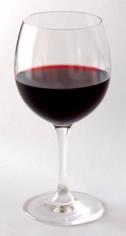FOR IMMEDIATE RELEASE
ACS News Service Weekly PressPac: March 19, 2010
Detecting fake wine vintages Its an (atomic) blast
EMBARGOED FOR RELEASE: Sunday, March 21, 5:55 p.m., Eastern Time
Two decades of atomic bomb testing in the atmosphere are yielding an unexpected bonus for consumers, scientists reported here today at the 239th National Meeting of the American Chemical Society (ACS). It’s a new test to determine whether that Bordeaux or burgundy is from a fine vintage year and commands premium price or actually is a counterfeit vin ordinaire or cheap plonk worth much less.
Graham Jones, Ph.D., who headed the research, said that misrepresenting the vintage — the year the wine was made — is an ongoing problem. In their leading research, Jones and colleagues found that radioactive carbon dioxide produced from atomic bomb tests in the atmosphere absorbed by grapes can be used to accurately determine wine vintages. The new technique is similar to radio-carbon dating, used for years to estimate the age of prehistoric objects. It works by comparing the amount of carbon-14 (C-14), a less common form of atmospheric carbon, to carbon-12 (C-12), which is more stable and abundant.
The scientists used a highly-sensitive analytical device called an accelerator mass spectrometer to determine the carbon-14 levels in the alcohol components of 20 Australian red wines with vintages from 1958 to 1997 and then compared these measurements to the radioactivity levels of known atmospheric samples. They found that the method could reliably determine the vintage of wines to within the vintage year.
![]()
Contact
Science Inquiries: Michael Woods, Editor, 202-872-6293
General Inquiries: Michael Bernstein, 202-872-6042

fine vintage or a fake, scientists are
using traces of radioactive carbon
leftover from atomic bomb tests to
estimate the age of the beverage.
Credit: Wikimedia Commons
(High-resolution version)

